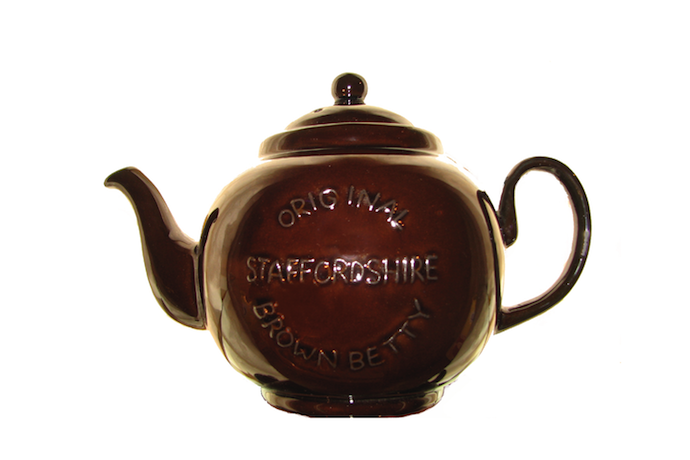Cauldon Ceramics
Brown Betty (19th century)A Brown Betty is a round teapot made from the red clay that was discovered in the Stoke-on-Trent area. This clay retained heat better and found use as the material for tea- and coffeepots as early as the seventeenth century. In the nineteenth century, teapots began to take on the rounded shape of the modern Brown Betty, named after its manganese brown glaze – the so called Rockingham Glaze. This glaze was brushed on the pot and allowed to run down the sides, creating a streaky finish. In the Victorian era, when tea was at its peak of popularity, tea brewed in the Brown Betty was considered excellent. The round design of the pot allowed the tea leaves to swirl around as the water was poured into the pot, releasing more flavour with less bitterness.
The trademark glaze dates back to 1757 when it was first produced by Swinton Potteries until its closure in 1842. Based in Stoke-on-Trent, the historical home of English ceramics, Cauldon Ceramics now holds the exclusive design rights and are the sole producers of the ‘original’ Brown Betty teapot. An authentic Brown Betty will have a small removable Union Jack and is marked on the bottom ‘Cauldon, Made in England’.
Care has been taken to trace the ownership of any copyright material and to contact the owner. The author does not intend to infringe on anyone’s copyright for text, photos or otherwise. Anyone who feels that any item in these pages may have inadvertently breeched their copyright should advise the author via the contact sheet, including a link to the page, so that appropriate remedial action can be taken.







